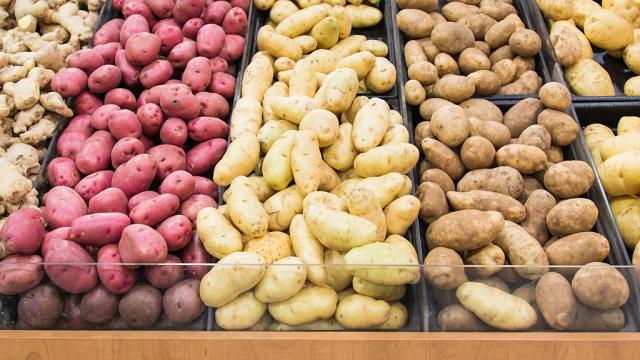Potatoes are a staple in most people’s pantries. They are truly an epic vegetable that has multiple cooking uses. But how can you tell if a potato is still safe to use?
At Lifehacker, we’ve covered why smelling your food isn’t a reliable method to tell if food has gone bad. The use-by date is there for a reason. But when it comes to fresh fruit and vegetables, what should you look out for?
Potatoes: What separates a good one from a bad one?
There are obviously some common-sense rules that apply when you’re picking out your fresh food. For instance, if it has mould growing on it, probably not a good sign.
It can be a bit harder to tell with potatoes. A representative from the Food Safety Information Council told us via email that you should never eat a green or sprouting potato:
All potatoes contain natural toxins called glycoalkaloids. The levels are usually low but higher levels are found in potato sprouts, and the peel of potatoes that taste bitter. It is important to avoid eating the sprouts and to remove any green or damaged parts before cooking. Do not eat cooked potatoes that still taste bitter. If you come across a green potato crisp, it’s probably best not to eat it. Remember to store potatoes in a dark, cool and dry place.
You may have heard the rule about avoiding green chips in your chip packet and this is very much the truth. Green does not mean ‘go’ in potato-land.
When it comes to cooked potatoes or similar starchy foods like pasta or rice, they should be refrigerated immediately under 5 degrees celsius. That’s right, no leaving things out in the open to cool, chuck them in the fridge ASAP.
The Food Safety Information Council explains the reason why:
Once it is cooked and begins to cool then toxins formed by Bacillus cereus can form heat resistant spores and a heat resistant toxin. If cooked food is allowed to cool slowly the spores can germinate and reheating or lightly cooking the food will not destroy this toxin. The bacteria can grow and produce toxin at refrigeration temperatures, it does so much more slowly than at room temperature.
You also shouldn’t keep pre-cooked food in the fridge for longer than two or three days. A good thing to keep in mind before your next meal prep.

Leave a Reply
You must be logged in to post a comment.